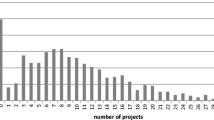Abstract
Better leverage of public funding is essential in order to trigger the investment needed for energy efficiency. In times of austerity governments increasingly look at policy instruments not funded by public expenditure and energy saving obligations represent one option. Because energy saving obligations are paid for by all energy customers, the degree to which they are able to raise additional private capital for energy efficiency investments is crucial with regard to the financial burden on consumers. In this paper, we systematically assess how successful energy saving obligations were in levering capital from parties other than the obligated entities including private investors and other public bodies. We analyse three countries with substantial experience with energy saving obligations, identify the main design differences and the effect this has on the degree of leverage. We conclude that the design of energy saving obligations largely determines the degree of leverage and that that there appears to be a trade-off between high leverage and additionality.


Similar content being viewed by others
Notes
For a more detailed description of saving obligation principles, see Bertoldi and Rezessy (2008).
We exclude policy instruments like product regulation that require private investment with no matching public money.
No data is available yet about the interaction between the obligation and the soft loan scheme, which was only implemented in 2009.
Direct costs represent only 35 % of the total costs incurred by obligated parties in France. In contrast, this share is 85 % in the UK.
The CERT update gives a number of nearly 2.5 million wall insulation measures and 3.5 million loft insulation measures, which covers about 20 % of the British building stock.
References
ADEME (2013). Evaluation qualitative du dispositif CEE – 2ème période 2011-2013, Synthèse. http://www2.ademe.fr/servlet/getDoc?cid=96&m=3&id=87905&p1=30&ref=12441. Accessed 07 Nov 2013.
Bertoldi, P., & Rezessy, S. (2008). Tradable white certificate schemes: Fundamental concepts, Energy Efficiency (Vol. 1, pp. 237–255). Netherlands: Springer. Issue 4.
Bertoldi, P., Rezessy, S., Lees, E., et al. (2010 March). Energy supplier obligations and white certificate schemes: Comparative analysis of experiences in the European Union, Original Research Article Energy Policy. Vol. 38, Issue 3, (pp. 1455–1469). Elsevier.
Bundgaard, S.-S., et al. (2013). Spending to save: Evaluation of the energy efficiency obligation in Denmark, 2013 eceee summer study.
DECC. (2010). Extending the carbon emissions reduction target to December 2012. London, DECC: Impact Assessment.
DEFRA. (2004). Energy efficiency: The government’s plan for action. London: DEFRA.
DEFRA. (2007). UK energy efficiency action plan 2007. London: DEFRA.
DGEC. (2013). Lettre d’information CEE, Avril 2013. http://www.developpementdurable.gouv.fr/IMG/pdf/130401_Lettre_d_information_CEE.pdf. Accessed 7 Nov 2013.
Eichhammer, W., Schlomann, B., & Rohde, C. (2012). Financing the energy efficient transformation of the building sector in the EU. Retrieved 07/10/2013 from http://www.odyssee-indicators.org/publications/PDF/Building-policies-brochure.pdf. Accessed 7 Nov 2013
Giraudet, L.-G., Bodineau, L., & Finon, D. (2012). The costs and benefits of White Certificates schemes, energy efficiency (Vol. 5, pp. 179–199). Netherlands: Springer. Issue 2.
Lees, E. (2006). Evaluation of the Energy Efficiency Commitment 2002-05. Wantage: Eoin Lees Energy.
Lees, E. (2008). Evaluation of the Energy Efficiency Commitment 2005-08. Wantage: Eoin Lees Energy.
OFGEM. (2005). A review of the Energy Efficiency Commitment 2002–2005. London: OFGEM.
OFGEM (2012a). Approach to enforcement of the Government’s Carbon Emissions Reduction Target (CERT) and Community Energy Saving Programme (CESP). Retrieved 23/10, 2012, from http://www.ofgem.gov.uk/Sustainability/Environment/EnergyEff/InfProjMngrs/Documents1/Open%20letter%20CERT%20CESP%20210912.pdf. Accessed 23 Oct 2012.
OFGEM (2012b). Carbon emissions reduction target update. September 2012. Retrieved 11/10, 2012, from http://www.ofgem.gov.uk/Sustainability/Environment/EnergyEff/CU/Documents1/OfGem%20CERT%20Q17%20June%202012_v03.pdf. Accessed 11 Oct 2012.
RAP (2012). “Energy savings obligationsglobal lessons & the “Efficiency Utility” Model”, presentation at the DENEFF workshop in Berlin October 24, 2012 Retrieved 12/06/2012 from http://www.raponline.org/document/download/id/6244. Accessed 12 June 2012.
Rosenow, J. (2012). Energy savings obligations in the UK—a history of change. Energy Policy, 49, 373–382.
Rosenow, J., & Eyre, N. (2013). The green deal and the energy company obligation. Proceedings of the ICE—Energy, 166, 127–136.
Rosenow, J., Platt, R., & Flanagan, B. (2013). Fuel poverty and energy efficiency obligations—a critical assessment of the supplier obligation in the UK. Energy Policy, 62, 1194–1203.
Schlomann, B., Rohde, C., Eichhammer, W., Bürger, V., & Becker, D. (2013). Which role for market-oriented instruments for achieving energy efficiency targets in Germany? Energy & Environment, 24(1), 27–56.
Togeby, M. (2012) Evaluering af energiselskabernes energispareaktiviteter, EaEnergianalyse, Kopenhagen 2012 Retrieved 11/12/2012 from: http://www.ens.dk/da-DK/ForbrugOgBesparelser/EnergiselskabernesSpareindsats/Documents/Evaluering2012/Evaluering2012Hovedrapport.pdf. Accessed 11 Dec 2012.
Author information
Authors and Affiliations
Corresponding author
Rights and permissions
About this article
Cite this article
Rohde, C., Rosenow, J., Eyre, N. et al. Energy saving obligations—cutting the Gordian Knot of leverage?. Energy Efficiency 8, 129–140 (2015). https://doi.org/10.1007/s12053-014-9279-1
Received:
Accepted:
Published:
Issue Date:
DOI: https://doi.org/10.1007/s12053-014-9279-1




